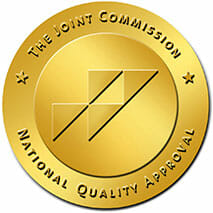Student-Athletes and Opioid Abuse In Sports
The energy and stamina kids exude is fascinating. To hone that energy, more and more parents are encouraging their children to engage in sports with each passing year. Sports teach kids so many valuable lessons about life. But student involvement in sports, especially high-injury activities, leads to larger odds of opioid abuse in sports.
Youth participants in football and wrestling have approximately 50% higher odds of nonmedical use of opioids compared to same-age students who did not participate in these sports[1] Gender plays a role too. With the rigorous demands of some sports, male athletes were twice as likely to be prescribed painkillers. They were also four times as likely to misuse or abuse their prescriptions.
Chronic Pain, Seeking Relief
The toll of high-injury sports creates a vicious cycle of playing, pain, and medical treatment for relief that has led athletes to abuse prescription medication. Students don’t want to miss the big game, and with the pressure of competing at high levels, students seek options to function through their pain. This cycle can lead to lifetime abuse of opioids.
Brett Favre’s addiction to painkillers is well documented. The former Packers quarterback has shared his story of addiction to Vicodin. In 1996 Favre voluntarily entered the NFL’s substance-abuse program.[3] He was in and out of treatment several times. He admitted to taking some 15 pills in a day; explaining that he gradually worked his way up to the total over the years.[2] His story of opioid abuse in sports is all too common.
Creighton’s Story of Opioid Abuse in Sports
Creighton Shipman was a stand-out athlete on the lacrosse field. During his time on his high school team, the Wando High School Warriors enjoyed their first perfect season, including a victory at the state championship while he was a senior in 2015. Off the field, the talented and smart young man was fighting his own personal battle with opioid abuse[4].
Creighton was cleated in the ankle during a lacrosse match in 2011, while he was a freshman. Soon after, he began experiencing excruciating pain with complications related to his injury. He was treated with doctor prescribed opioids to manage the pain during his recovery. It would be the first time he ever got high.
From Prescription To The Problem
- More than 130 people die every day from opioid-related drug overdoses.[5]
- Nearly 36 percent of all U.S. opioid overdose deaths involve a legally obtained opioid.[6]
- Overdose deaths involving prescription opioids have increased by about five times since 1999.
- From 1999 to 2017, more than 200,000 people died from overdoses related to prescription opioids.
- More than 17,000 overdose deaths involving prescription opioids occurred in 2017.
- More than 10 million people misuse prescription opioids every year, according to the U.S. Department of Health and Human Services (HHS) statistics.[5]
Kids, Injuries, And Drugs
When a child between five and nine years old in the United States goes to the emergency room for a sports- or recreation-related injury, roughly one out of every eight will leave the ER with a prescription for opioids.[7]
Children older than nine years and young adults have even higher chances of leaving the emergency room with a prescription for opioids.
Children between 10 years old and 14 years old received opioids in one out of five visits to the emergency room. For teens between 15 and 19 years old, one in four patients left the ER with opioids. Young adults who sought treatment in the ER for a sports-related injury received prescription pain medication nearly half the time, at 46%.
Creighton’s Addiction to Prescription Opioids
The pain from his 2011 ankle injury didn’t go away for Creighton Shipman. It initially got worse actually. Bacteria attacked the bruised bone. Eventually, an abscess formed, and the area around the bone turned septic. But by his senior year, Creighton was seemingly ready to play sports again. He earned the co-captain spot on the lacrosse team, which eventually clutched the state title. But he never recovered from his addiction. By age 19, just after his freshman year in college, Creighton died from a heroin overdose.
Help for Opioid Abuse in Sports Is Here
Recovery from opioid abuse related to a sports injury is possible in Prescott. If you want to recover from drug and alcohol addiction in Prescott, AZ, we can help. At Silver Sands Recovery, we specialize in heroin addiction, drug addiction, chronic relapse, opiate addiction, and alcohol addiction. Contact us today to get started.
Source:
[1] https://www.ajmc.com/newsroom/5-things-about-opioid-abuse-among-athletes
[2] https://www.cbssports.com/nfl/news/brett-favre-says-he-used-to-take-a-months-worth-of-painkillers-in-two-days/
[3] http://www.jsonline.com/sports/packers/45266162.html
[4] http://www.thedanielislandnews.com/news/creighton-shipman-life-cut-too-short
[5] https://www.hhs.gov/opioids/about-the-epidemic/index.html
[6] https://www.cdc.gov/rxawareness/about/index.html
[7] https://www.cincinnati.com/story/news/2019/11/15/25-percent-american-youths-hurt-sports-gets-opioids-emergency-room-cdc-says/2574260001/
About the author:

Lisa Waknin is the Founder and Director of Silver Sands Recovery, located in Prescott, Arizona. Lisa started Silver Sands Recovery after immersing herself in the addiction treatment world for several years to figure out what could be done differently to help her daughter and others like her to overcome addiction and stay sober. She believes in a hands-on treatment approach, which includes taking someone out of their environment, providing a 90-day program in a structured environment. During treatment, clients not only recover physically but also learn to live their life again. Lisa is a sought-after expert speaker for recovery support groups, charities, schools, communities, and companies wanting to educate themselves on the explosion of opiate and heroin abuse in our country and the best way to understand, treat, and beat it.





